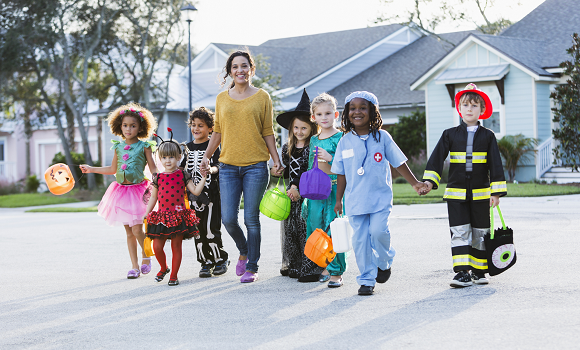According to the American Academy of Pediatrics, pedestrian injuries are the most common way kids get hurt on Halloween. Children’s Minnesota is sharing some tips for trick-or-treaters, parents and drivers to help keep everyone safe this year.
Safe trick or treating guidelines
- Do your best to stay on sidewalks and walking paths while trick-or-treating, but when they aren’t available, be sure to face oncoming traffic and walk as far to the left as possible.
- It’s safest to cross the street at crosswalks and corners, and remind children to never cross the street without an adult.
- Look both ways before crossing the street, and never assume that a vehicle will stop.
- Bringing glow sticks or flashlights is a fun way to help kids see where they are going and to help prevent trips and falls. They also make it easier for drivers to see kids.

Trick-or-treating without a parent
- Children under age 12 should never trick or treat without an adult.
- While it is safe for older children to trick or treat without an adult, encourage them to stay with their friends and to never trick or treat alone.
- Before they head out, help them plan a trick or treating route on streets that you are familiar with and know to be safe.
- If possible, have your child carry a cell phone. This will help them stay in contact with you and help them in case of an emergency.
- Remind kids to only go to homes that have porch lights on and to never enter the home or car of someone they don’t know.
Safe driving
It’s important to keep your eyes on the road every time you drive, but it’s especially critical on Halloween when there’s more pedestrian traffic than usual. To limit injuries this Halloween, follow these tips to make sure everyone gets home safely!
- Refrain from any distractions while driving, especially using a cell phone.
- Slow down and drive extra cautiously in residential areas. Kids will be out walking and their costumes may be dark, making them difficult to see at night.
- Remember that costumes may limit children’s ability to see, so they may not see you! Always be on the lookout for trick-or-treaters.
From our Children’s family to yours, we’re wishing you all a happy, healthy and safe Halloween!
Kaitlyn Kamleiter